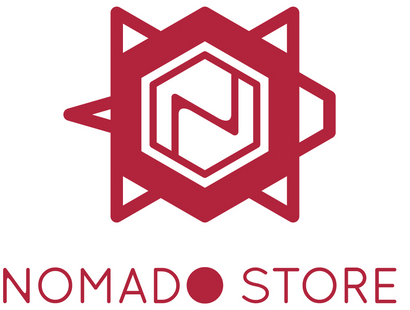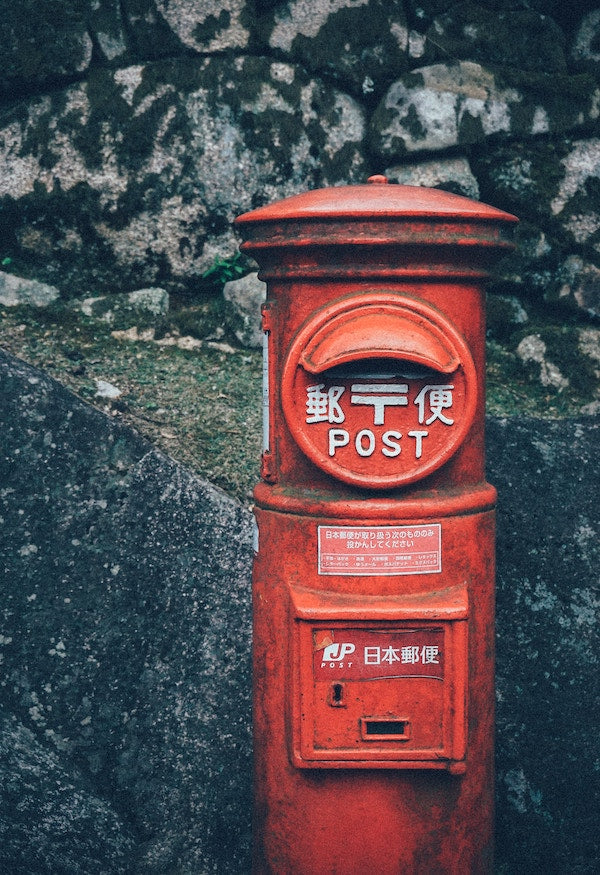Your Cart is Empty
Menu
-
- Home
- New Arrivals
- Brands
- .Urukust
- ai amu indigo products
- Akashiya
- APICA
- Artisan and Artist
- Ateliers Penelope
- Ateliers Phileas
- Cozyca products
- Diamine Inks
- e+m
- Echizen Lacquerware
- Esmie
- Esterbrook Pens
- Exacompta Exatime
- Furukawa Shiko
- Herbin
- i ro se
- Itsuko Naka
- Jhands
- Kakimori
- KAPPADO
- Kaweco
- Kleid Stationery
- Kobeha Graphilo
- Kochi
- KOH-I-NOOR HARDTMUTH
- Kohunkan Kappansho
- Kokuyo
- KOMO Handsome Linen
- Koyomi Seikatsu
- Kyoku Haku
- Lamy
- Luddite
- Mabel & Co
- Marineday
- Maruai Paper
- Masuya Monokaki Notebooks
- Merchant & Mills
- MD Paper Products
- Midori
- Mitchell-Finch Design
- Musubi Furoshiki
- MWC
- Nagao Orifu Indigo Products
- Nanala Design
- Nomado Kappan
- Nomado Store
- Palomino Blackwing
- PAL PLANNER
- Papier Platz
- Peg and Awl
- Penco
- PICUS
- Platinum
- Retro Hightide
- Rhodia
- Roterfaden
- Sailor Pen
- Sakae Technical Paper
- Sanby
- Shogado
- Smith's Leather Balm
- Sonnenleder
- Suatelier
- Taylor's Eye Witness
- TEN Stationery
- Teranishi
- Tokiwa suribachi
- Tombow
- Tomoe River
- Tools To Live By
- Traveler's Company
- Tsubame Note
- TWSBI
- un.quatre atelier
- Uni Mitsubishi Pencil Company
- VAU
- Yamamoto Paper
- Ystudio
- Products
- By Price
- Blog
- Outlet
-
- About Us
- Contact
- Shipping
- Terms & Conditions
- Returns
- FAQ
- Login

Brands
- i ro se
- Itsuko Naka
- Jhands
- Kakimori
- KAPPADO
- Kaweco
- Kleid Stationery
- Kobeha Graphilo
- Kochi
- KOH-I-NOOR HARDTMUTH
- Kohunkan Kappansho
- Kokuyo
- KOMO Handsome Linen
- Koyomi Seikatsu
- Kyoku Haku
- Lamy
- Luddite
- Mabel & Co
- Marineday
- Maruai Paper
- Masuya Monokaki Notebooks
- MD Paper Products
- Merchant & Mills
- Midori
- Military Watch Company (MWC)
- Mitchell-Finch Design
- Musubi Furoshiki
- Nagao Orifu Indigo Products
- Nanala Design
- Nomado Kappan
- Nomado Store
- Palomino Blackwing
- PAL PLANNER
- Papier Platz
- Peg and Awl
- Penco
- PICUS
- Platinum
- Retro Hightide
- Rhodia
- Roterfaden
- Sailor Pen
- Sakae Technical Paper
- Sanby
- Shogado
- Smith's Leather Balm
- Sonnenleder
- Suatelier
- Taylor's Eye Witness
- TEN Stationery
- Teranishi
- The Superior Labor
- Tokiwa suribachi
- Tombow
- Tomoe River
- Tools To Live By
- Traveler's Company Japan
- Tsubame Note
- TWSBI
- i ro se
- Itsuko Naka
- Jhands
- Kakimori
- KAPPADO
- Kaweco
- Kleid Stationery
- Kobeha Graphilo
- Kochi
- KOH-I-NOOR HARDTMUTH
- Kohunkan Kappansho
- Kokuyo
- KOMO Handsome Linen
- Koyomi Seikatsu
- Kyoku Haku
- Lamy
- Luddite
- Mabel & Co
- Marineday
- Maruai Paper
- Masuya Monokaki Notebooks
- MD Paper Products
- Merchant & Mills
- Midori
- Military Watch Company (MWC)
- Mitchell-Finch Design
- Musubi Furoshiki
- Nagao Orifu Indigo Products
- Nanala Design
- Nomado Kappan
- Nomado Store
- Palomino Blackwing
- PAL PLANNER
- Papier Platz
- Peg and Awl
- Penco
- PICUS
- Platinum
- Retro Hightide
- Rhodia
- Roterfaden
- Sailor Pen
- Sakae Technical Paper
- Sanby
- Shogado
- Smith's Leather Balm
- Sonnenleder
- Suatelier
- Taylor's Eye Witness
- TEN Stationery
- Teranishi
- The Superior Labor
- Tokiwa suribachi
- Tombow
- Tomoe River
- Tools To Live By
- Traveler's Company Japan
- Tsubame Note
- TWSBI
Introduction to Japanese Watercolours (Gansai)
December 02, 2020 4 min read

One of the best ways to boost your creativity is to try something new and take yourself out of your comfort zone.
Whether you already paint with traditional watercolours or not, we are sure that you will love using Akashiya Gansai. Gansai (顔彩) are traditional Japanese watercolour paints.
You can use them to paint in the classic Western or Japanese styles, or our current passion - Etegami. Etegami is a perfect art form for beginners, requires no special talent and is guaranteed to be lots of fun! See our etegami introduction here for more information.
Gansai differ from Western watercolours in several ways.
- Finish
Gansai have a glossier finish than Western watercolours, especially in areas where they are applied generously. All watercolour paints are made by combining pigment and a binder. Gansai are traditionally bound with animal glue, beeswax, sugar and other natural binders. Western watercolours are bound with gum arabic. The type of binder used gives each type of paint a specific appearance.
- Colour saturation
Gansai also have a much higher pigment to binder ratio than Western watercolours. They are designed to be used in a single layer on absorbent Japanese paper rather than in several layers. The colours are more vibrant and saturated than Western ones, even when diluted. There is very little colour fade from wet to dry.
This high saturation makes Gansai ideal for sketches, while allowing the artist to lighten the colours by increasing dilution. Because the binder adhesion in gansai is weaker, the colours are also easier to lift (removing with a wet brush to lighten an area).
Gansai paints are said to be unsuitable for mixing, producing muddy tones. We recommend trying this out for yourself.
- Colour palette
The colours of traditional Japanese gansai sets are often different from those in Western watercolours. They were formulated for Japanese picture painting, an art form which is very different from Western painting in the classic European tradition. Japanese colours are inspired by nature, there is usually a large selection of blues and greens in gansai palettes.
- Pan size
Gansai come in much larger pans than typical Western half pans. Traditional Japanese watercolour brushes are larger and need more space to avoid damaging the bristles. Being larger, they are also suitable for use with calligraphy brushes.These brushes work well for painting in details.
- Paper
As mentioned above, these paints were created for use on more absorbent Japanese paper.
We currently offer 4 paper options for use with the Akashiya gansai paints:
1. For ETEGAMI (see our article on etegami here):Typical etegami postcards made from 2 kinds of beautiful Japanese paper. One of them with average blur or absorbency (GASEN) for more precise lines, the other with more pronounced blur (HONGASEN) for artistic effects. Experienced etegami artists prefer more blur, beginners should start with the other one.
2. 243 x 334 mm sized papers:- Akashiya “Pine” Paper, bright white with a pleasant texture for smooth brush strokes. It has low bleed, which makes it suitable for calligraphy or more precise painting.
- Akashiya Shoun Paper, recommended for Sumi-e (ink painting) or Gansai. This pure white handmade paper gives beautiful deep blacks. It has a strong bleeding factor (blur) which makes it very suitable for artistic effects.
We recommend also trying them out on traditional Western watercolour paper, including the Traveler’s Company watercolour insert for the Traveler’s Notebooks.
Basic supplies to get started with gansai painting:
We offer an etegami starter kit in the store, but you can also purchase the items separately and in different configurations.
1. Gansai paint sets: 2 sizes and 3 options.

2. Mixing palettes : porcelain or ABS plastic
Generally, it is not recommended to paint directly from the pans, but to mix the paints with water in a palette. Akashiya plum flower shaped palettes allow you to separate colours or different saturations of a single colour from each other, or from ink.
The ABS version is cheap, lightweight and compact, perfect for when you are on the move. The porcelain version is much more durable and will not stain (remain colour neutral).

3. Water dropper: this simple accessory allows you to dose water precisely in the compartments of your mixing palette. Also very useful for calligraphy.

4. Brushes (fude): we offer a set of 3 brushes in different sizes for both precise and broad strokes. Akashiya have been making brushes for over 300 years, you can rely on their experience. We recommend purchasing 2 sets of brushes and keeping them separate if you also intend to practise ink painting (sumi-e).

5. Watercolour brush pen: useful for lifting paint or when travelling.

6. Felt underlay (shitajiki): used under a sheet of Japanese paper to provide a better surface for writing or painting by evening the pressure on the paper and helping avoid staining the work surface.
7. Ink brush pen or extra paint brush with soluble ink to draw contours for etegami painting.
8. A cloth or tissue to dry your brushes
We love painting with these gorgeous gansai sets, we recommend trying them out as soon as possible! See the full range here.
Subscribe
Sign up to get the latest on sales, new releases and more …

Newsletter
GET A 5% DISCOUNT OFF YOUR NEXT ORDER!
Keep informed of new products & exclusive promotions.
We respect your privacy.
